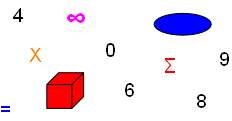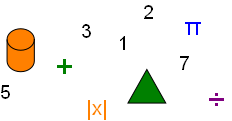



Sequence Convergence and Divergence


Sequence Convergence to a Limit
Many sequences will approach a number L as n gets very large. L is the limit of the sequence. That is, the sequence approaches the number L as the value of n gets larger and larger. L is the number value to which the sequence is converging, getting closer and closer to, but never becoming that value L regardless of how large the nth term of the sequence becomes.
By definition a sequence has a domain of all positive integers. This means a sequence has an infinite number of terms. While examples for Arithmetic and Geometric Sequences find the nth terms of a sequence these terms are a very small subset of the domain of that sequence.
For example, the sequence (1/2) n:
a1 = 1/2
a2 = 1/4
a3 = 1/8
a4 = 1/16
a5 = 1/32 …
This sequence approaches zero as n gets larger (as n approaches infinity). We would write this as:
lim (1/2) n = 0
n → ∞
It is read as:
The limit of (1/2) n equals zero as n approaches infinity.
Similarly, the sequence 1 − (1/2) n converges to 1:
lim 1 − (1/2) n = 1
n → ∞
Sequences that Diverge
Sequence Divergence is the opposite of Sequence Convergence. As n increases the nth terms of the sequence also increase. As an example, let’s use the sequence defined by 2n. The first few terms would be 2, 4, 6, 8 and 10. By increasing n the terms resulting also increase, and as n is increased infinitely so then does 2n increase infinitely.
Copyright © DigitMath.com
All Rights Reserved.